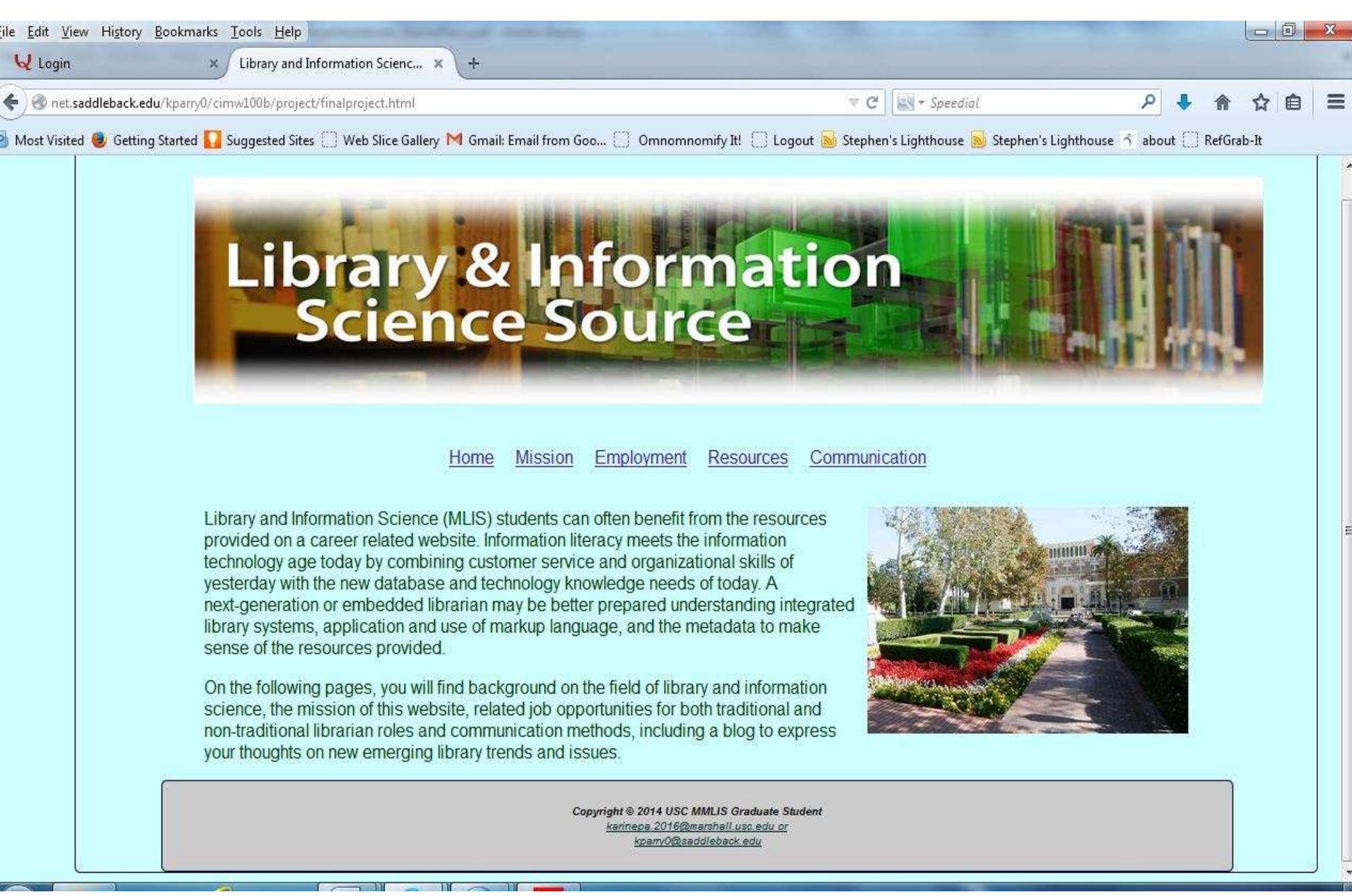USC LIM591D Summer 2014 Librarians in Traditional and Nontraditional Roles (original) (raw)
Abstract
Librarianship as a field is emerging and transitioning to meet the growing demands of user's that are adapting to the technology generation. These library science (LIS) students and library professionals are recognizing the “paradox of expertise ”related to their profession, overcoming its challenges, and incorporating the changes that patrons are demanding into their libraries, including: databases, integrated library systems and new advanced search engines. Alongside incorporating these improvements into the traditional library, librarians are also transitioning into nontraditional library positions. In an academic setting, librarians are becoming embedded librarians, a new emerging concept for these professionals. Basically, the bun-head, eye-glass wearing, quiet reference librarian is now emerging and transforming into the next generation librarian, meeting the needs of patrons demanding their service by learning technical skills and advancing their backgrounds. Librarians are also discussing these changes through various blog postings and websites specific to their field. Developing a curated list of employment resources and qualifications to be successful in a nontraditional librarian role aids librarians and other library professionals with their career development and progress objectives. Case studies and survey responses provide collected evidence of feedback received from library professionals in the field, related to employment opportunities and growth development in their profession. Overall, the goal is to employ librarians, whether that means in traditional, nontraditional next generation and/or embedded librarian positions.
Figures (13)
correlations and relationships (Questions 8, 9 & 15): responses received from the below 3 questions will be reviewed and analyzed to observe any
were constant comparisons. The correlation below suggests that libraries are at least influential in other constant variables in the above chart yielded non-computable results because the variables a tendency to be influenced by the frequency by which they visit the library. Comparing the
The results in this chart suggest that there is a constant unanimous agreement among the six Opportunities, as well as the incorporation of technology and databases in libraries to locate
5. On a scale of 1-10, with 10 being extremely satisfied, 5 being neutral/no comment and 1 being very dissatisfied, how satisfied would you say you are with the current job market in relation to you LIS degree?
standards for coding structure, potentially following MARC and AACR2 standards.
1. How often do you visit a library - academic, public, school or special (business/health/law/etc.)?
5. Onascale of 1-10, with 10 being extremely satisfied, 5 being neutral/no comment and 1 being very dissatisfied, how satisfied would you say you are with the current job market in relation to your MMLIS, MLIS and/or LIS degree?
6. Have you applied for any of the below positions as a librarian and/or library science and/or information science student? [Select all that apply]
10. What would you be interested in learning more about related tc the field of librarianship and/or employment opportunities in the field? [Select all that apply]

Loading Preview
Sorry, preview is currently unavailable. You can download the paper by clicking the button above.









![6. Have you applied for any of the below positions as a librarian and/or library science and/or information science student? [Select all that apply]](https://figures.academia-assets.com/35398774/table_007.jpg) ](
](![10. What would you be interested in learning more about related tc the field of librarianship and/or employment opportunities in the field? [Select all that apply]](https://figures.academia-assets.com/35398774/table_008.jpg) ](
](
